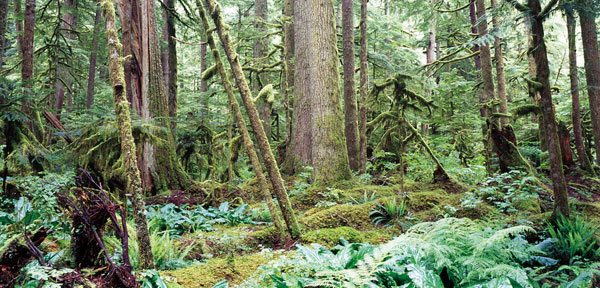
August 21, 2017; Washington Post
One controversial option for decreasing the rate of greenhouse gas emission into the atmosphere is the carbon offset. Rather than reducing the amount of carbon they emit, companies compensate for this pollution by preserving forests—in essence, paying to let nature do the work.
California’s offset program is part of its carbon cap-and-trade system, which imposes an overall decrease in greenhouse gas emissions between now and 2030 and requires companies to pay penalties for going over their carbon emission limits. The ability to buy and sell offset credits to preserve forests around the nation has created a market for these permits. In July, California Governor Jerry Brown signed into law an extension of the cap and trade system to 2030. “Under the current cap-and-trade program, offset credits can make up as much as eight percent of the total amount of allowances used for compliance by a covered entity.”
Right now, the forest offset is only two percent of the potential allowances, but a study from Stanford University indicates it is working even at that percentage. Christa Anderson, a PhD student in environment and resources at Stanford University and the study’s lead author, has reported, along with Christopher Field and Katharine Mach, that the forests are being protected and the release of carbon stored within the trees and other vegetation is prevented. The study was published by Frontiers in Ecology and the Environment last week.
“It was really exciting to see, in this moment where it’s hard to find any positive news on climate change, here’s this very small program that looks like it’s actually working so far,” Anderson said. Regarding the small percentage of forest offset, she added, “So, that question of, are offsets allowing greenhouse gas emitters to avoid responsibility of reduction? Probably not, in this case.”
The study’s authors concluded that since only a quarter of the forests in the program were owned by conservation organizations like The Conservation Fund, the majority of the forest managers might not have protected the trees without the offset program, especially since they were previously being logged.
Sign up for our free newsletters
Subscribe to NPQ's newsletters to have our top stories delivered directly to your inbox.
By signing up, you agree to our privacy policy and terms of use, and to receive messages from NPQ and our partners.
Some parts of the study were subjective, including each forest’s carbon storage ability and potential complications that could create a “My forest is better than your forest so I should get more credits” bias. In addition, Anderson suggested, some improvement should be made in accounting for future risks. “You could imagine,” she said, “the state adding in some kind of metric and saying, because of climate change in this area, we think we have a greater risk of fire or bark beetle disease and death in trees, and so we need to account for that risk and deduct credits based on that higher risk.”
Michael Wara, a former climatologist and environmental law expert at Stanford University, said, “I think this kind of work is really important in the sense that it’s looking closely at what is actually happening as we develop carbon markets.” As reported in the Washington Post,
Wara was not involved with the new research, but helped advise the development of the proposal that extended California’s existing cap-and-trade scheme. He recognizes the program is working as far as it goes, but still acknowledges that companies are not encouraged to reduce environmental damage. He believes there is more evidence needed to establish its success.
“In some sense, forest carbon is trading one kind of co-benefit for another kind of co-benefit,” Wara said. “It’s not strictly a benefit, it’s a trade-off, because we’re going to burn more carbon in California in exchange for storing more carbon elsewhere.” Some of the fiercest critics of forest offsets are often people who live in or advocate on behalf of communities that are disproportionately affected by air pollution, he added.
This research demonstrates that California may indeed be on the right track to reduce its greenhouse gas emissions and make the state a leader on climate change under the Trump administration.
“The concept of a carbon offset is “a super complicated thing to get right,” Wara stated. “And it’s something that it appears, based on the evidence in this paper, that California may have gotten mostly or more or less right. I don’t think it’s an open and shut case, but this paper has evidence that’s suggestive of that fact.”—Marian Conway













